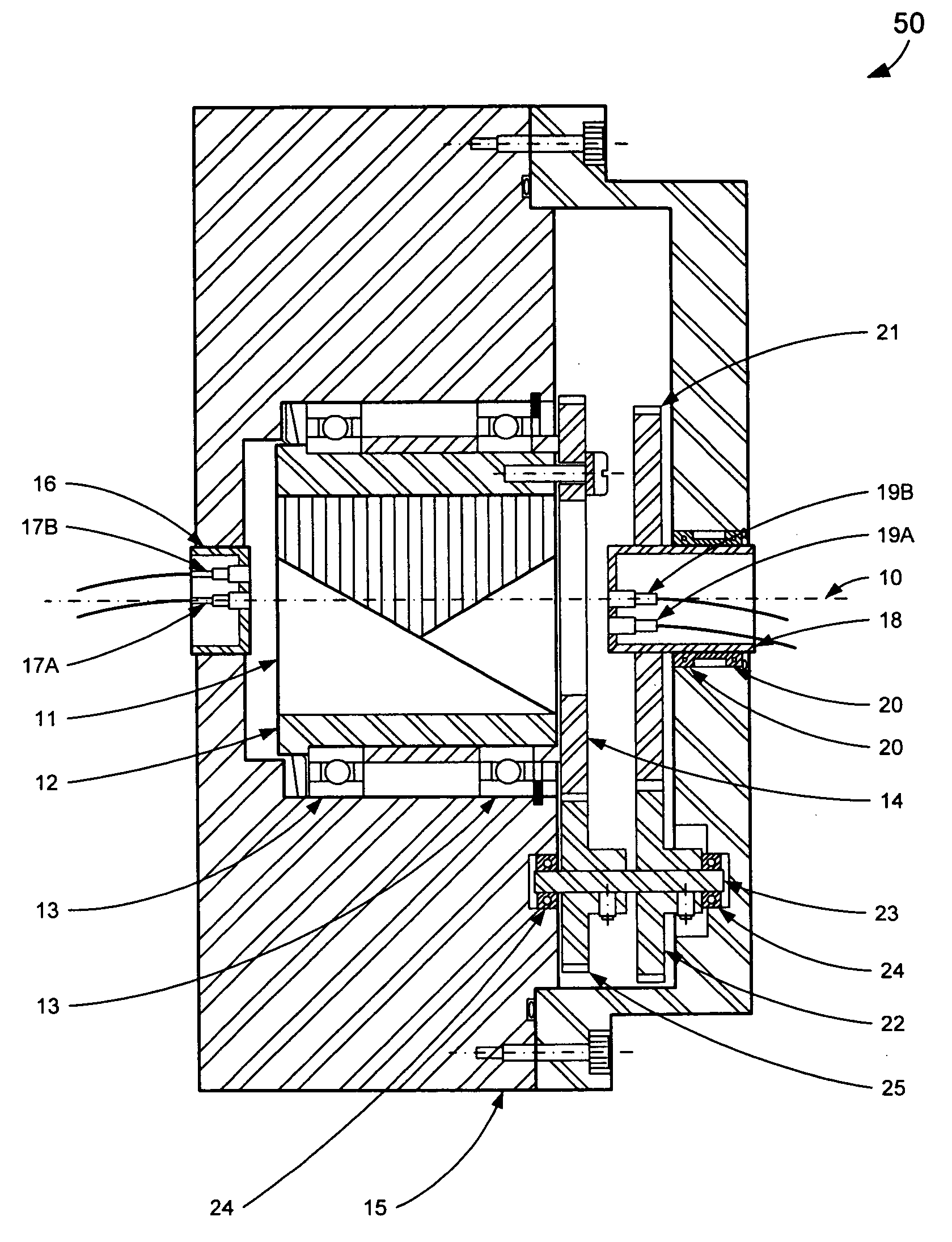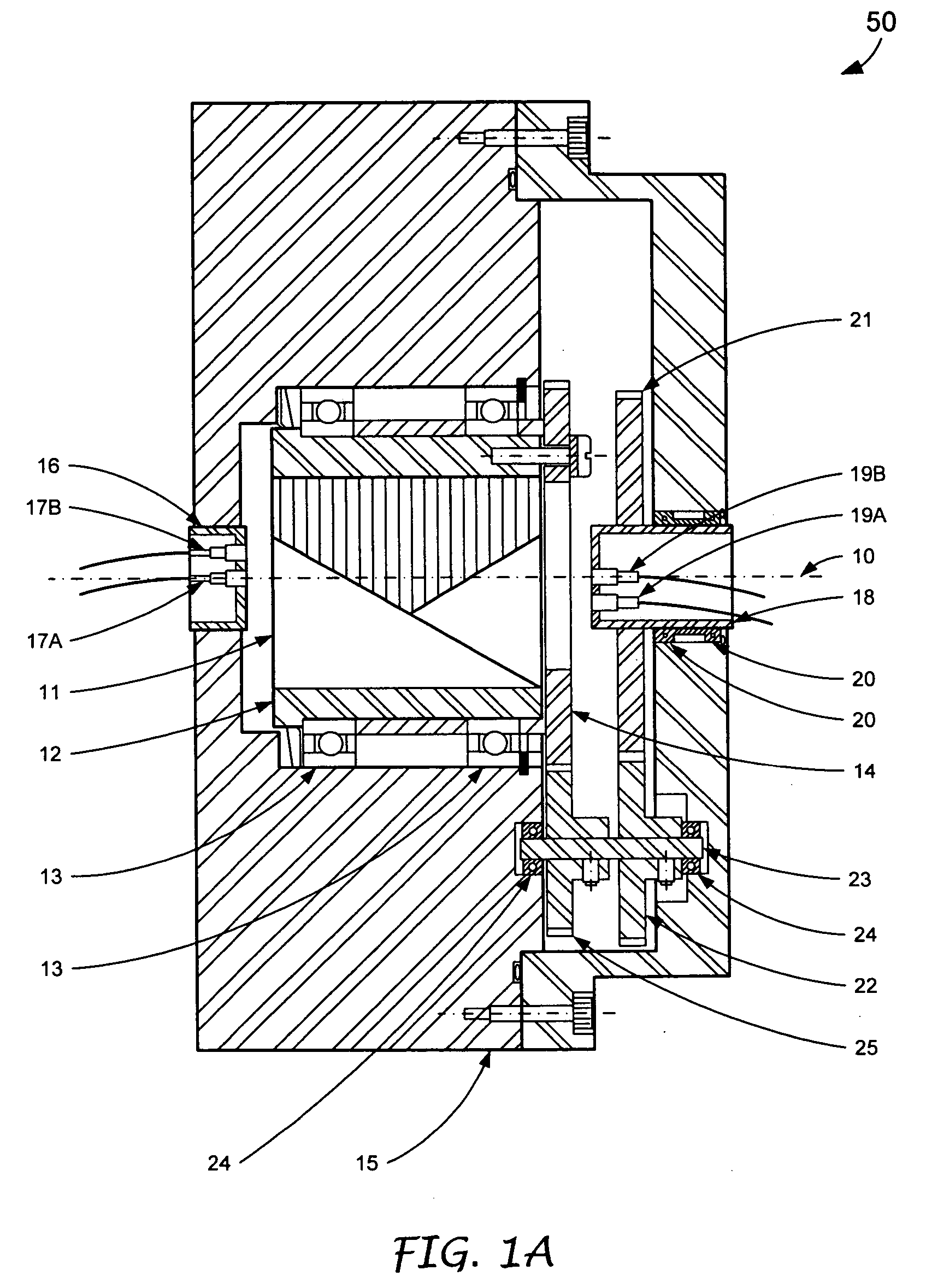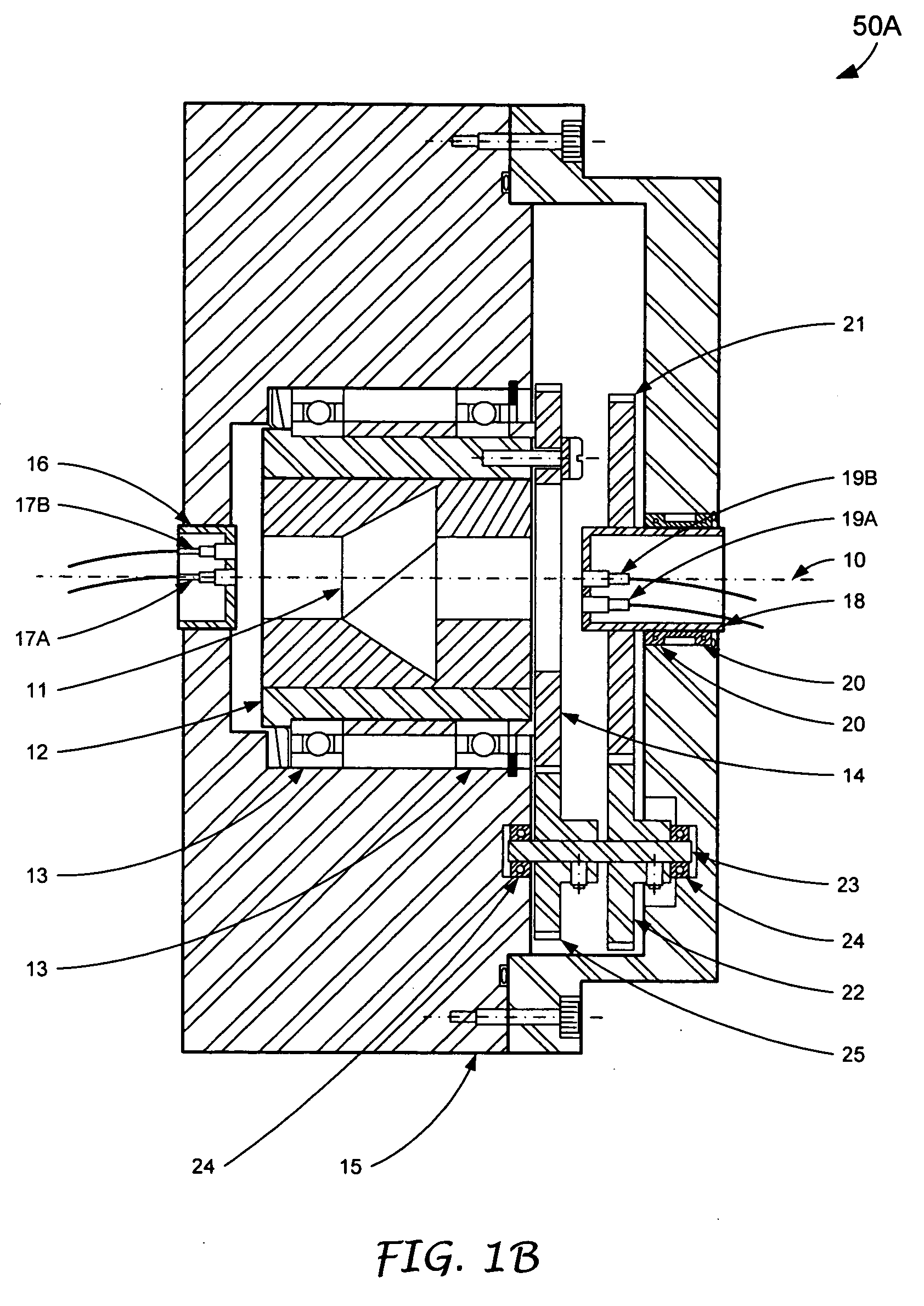Fiber optic rotary joint with de-rotating prism
- Summary
- Abstract
- Description
- Claims
- Application Information
AI Technical Summary
Benefits of technology
Problems solved by technology
Method used
Image
Examples
Embodiment Construction
[0016] According to one aspect of the present invention, an all-reflective de-rotating prism, e.g., an Abbe-Konig prism, is implemented within a fiber optic rotary joint (FORJ) to permit parallel transmission of a plurality of collimated optical fiber beams. In general, an Abbe-Konig de-rotating prism offers a number of advantages in the construction of a multiple channel FORJ. For example, the Abbe-Konig prism is completely reflective in nature and, as such, is insensitive to the wavelength of the optical signals that it transmits. In contrast, a length of a Dove prism, along the rotation axis, is dependent upon an index of refraction of the prism material, which is wavelength-dependent. Furthermore, an Abbe-Konig prism presents perpendicular faces to a collimated optical beam that is transmitted from an individual fiber (attached either to the stator or to the rotor) and, thus, the refraction of the beam, as the beam is transmitted through either surface of the prism, is zero, reg...
PUM
 Login to View More
Login to View More Abstract
Description
Claims
Application Information
 Login to View More
Login to View More - R&D
- Intellectual Property
- Life Sciences
- Materials
- Tech Scout
- Unparalleled Data Quality
- Higher Quality Content
- 60% Fewer Hallucinations
Browse by: Latest US Patents, China's latest patents, Technical Efficacy Thesaurus, Application Domain, Technology Topic, Popular Technical Reports.
© 2025 PatSnap. All rights reserved.Legal|Privacy policy|Modern Slavery Act Transparency Statement|Sitemap|About US| Contact US: help@patsnap.com



